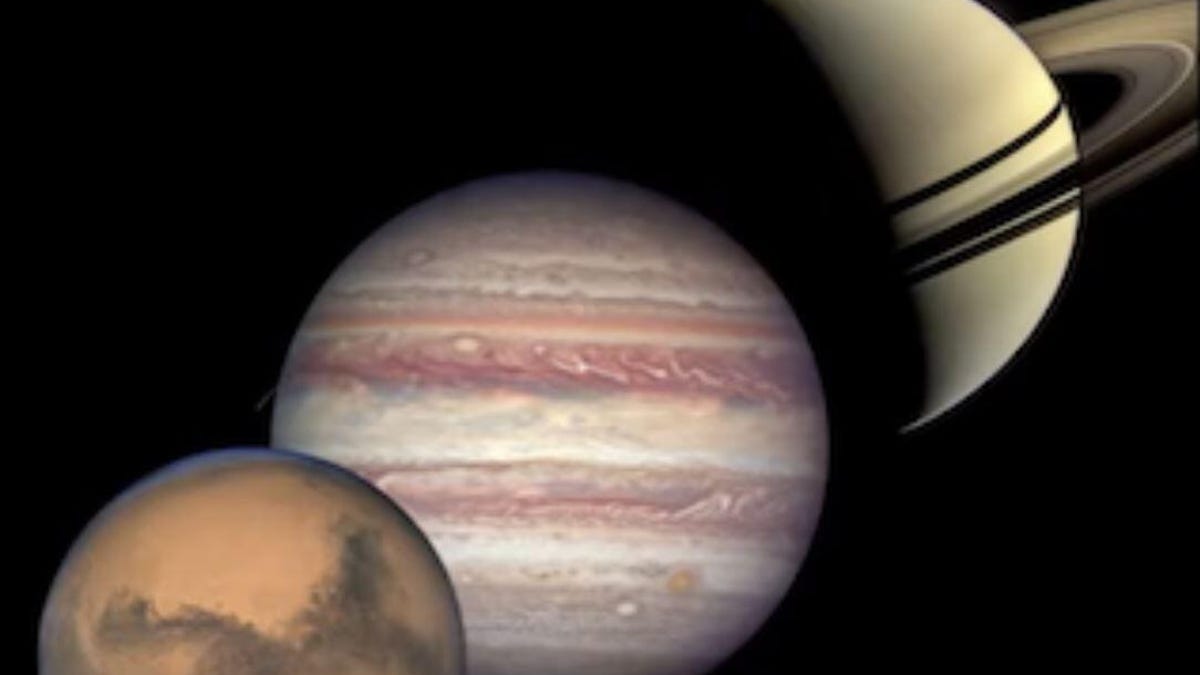See a pre-dawn lineup of Jupiter, Mars, Saturn and the 'pink moon' this week
A rare arrangement of planets and a fading supermoon can help early risers keep the week on track.

These three stunners will join the moon for the cosmic get together we wish we all could be having at our local pub.
While people stuck at home during the COVID-19 pandemic may be sleeping in more than ever right now, the early morning skies will be worth waking up for this Tuesday through Thursday as three planets will be unusually close to each other and the moon.
Before dawn on April 14, 15 and 16, the next three planets beyond our own as you head away from the sun will appear to congregate around the moon in a rare display.
These worlds are obviously millions of miles apart in reality, but from our perspective gazing out into the vast cosmos, they'll look to be lining up in a row. The moon will then appear to be passing by this lineup as if for an inspection of our solar system's most notorious characters.
On Tuesday, the waning "pink" moon will approach Jupiter, on Wednesday it will pass just below Saturn, and on Thursday it moves beneath Mars.
To see this spectacle, you'll need to be up at least one hour before sunrise, local time, and look in the direction of the constellations of Capricorn and Sagittarius to spot the planetary performance. Remember, you can easily spot planets in the night sky because they don't "twinkle" like more distant stars.
For a little more help, NASA offers the helpful video primer above.
The space agency notes that this is the closest we'll see these planets together until 2022, so get up early if you can to catch it.
As always, I would love to see any images backyard astronomers capture of the heavenly meeting. Share them with me on Twitter @EricCMack.

